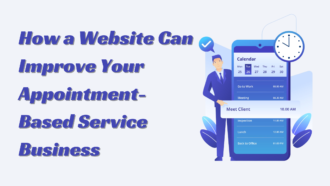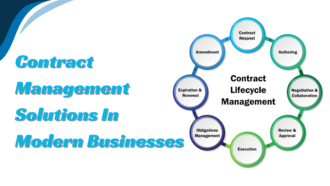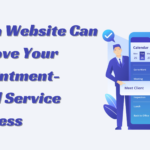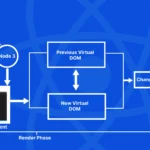The Ultimate Guide to IT Staff Augmentation in Software Development
Various strategies are available for outsourcing, but one thing is for sure: you want to hire the right people to get the job done. This is where software development that third-party providers are working on comes into play. Having highly skilled and talented experts to work on your project without breaking the bank can significantly help you.
It’s ideal for small business owners who don’t currently have the resources to hire full-time and in-house staff. Hiring and integrating employees can be costly because their taxes, healthcare benefits, sickness credits, and vacations should also be paid. Fortunately, you can always find an alternative with a reliable staff that’s on-call, depending on the project that you have in mind. Delve into their benefits below:
What are the Advantages of Staff Augmentation?
With the competitive landscape of the IT industry, it’s no wonder why businesses always aim to hire someone ahead of the competition. With the augmentation of the right people, you can supplement or lease a new team to help you with many things. If you’re interested, you can consult our IT staffing services for more information about the location and expertise that you’re looking for. You’re guaranteed to find top-tier talents who can help you in the long or short term.
These pros can help with scalability because, with their skills, you can quickly scale up without buying additional equipment and tools. You might want to hire sure developers for a specific phrase or point of the project, allowing you to quickly adapt and recruit a third-party provider without the complexities of an in-house staff.
Another reason many companies do this is that these professionals are often more affordable than those near you. Pay only for the services rendered in an as-needed relationship; you won’t have to deal with many headaches. Hiring full-time employees can be expensive, but it allows you to optimize your resources while maintaining high-quality output.
It’s also worth noting that getting in touch with new people brings fresh perspectives and diverse skill sets to your software development team. Collaborating with experienced professionals from different backgrounds and industries can help you tap into new ideas and innovative approaches that may not have been considered internally. See information about a creative approach on this helpful site.
This model also helps reduce time-to-market for software products or updates because, by leveraging external talent through staff augmentation, tasks can be completed faster due to increased workforce availability and specialized knowledge brought by these professionals.
Selecting the Right Partner for Your Needs
Choosing the best companies and providers who will work on your IT infrastructure is a must. Although there are a lot of providers out there, one of the things that you can do first is to assess your goals and your current requirements. Ultimately, you have to choose the ones who’ve done several projects in the past, and you may prefer those who have already worked in your industry.
You also need to evaluate their technical proficiency and capabilities. Review their portfolio and case studies to see if they have successfully delivered projects similar to yours, consider their reputation in the industry, and read client reviews or testimonials.
Communication is critical when working with an augmented team, so clear and compelling channels are established between both teams. I prefer responsive, proactive, and transparent partners in their communication.
Successful Implementation Tips for the Owners
- Define Your Goals: Identify your software development project’s specific needs and goals. Determine which skills and expertise are required to achieve those goals.
- Choose the Right Partner: Look for an IT staff augmentation partner who understands your industry and has experience working with similar projects. Evaluate their track record, reputation, and client testimonials.
- Communicate Expectations: Once you’ve selected a partner, communicate openly about expectations, timelines, deliverables, and project scope. Provide detailed documentation to avoid any misunderstandings.
- Select the Right Candidates: Work closely with your IT staff augmentation partner to identify suitable candidates with the necessary technical skills and cultural fit with your team.
- Onboard Effectively: When bringing new team members on board through IT staff augmentation, providing them with proper onboarding support is crucial to quickly integrating into your existing team structure.
- Respect Collaboration and Remote Communication Techniques: Foster collaboration between remote teams by utilizing tools like video conferencing platforms or project management software that promote effective communication across different time zones and locations.
- Monitor Progress Regularly: Keep track of each augmented resource’s Progress regularly by providing feedback sessions at regular intervals throughout the engagement.
Common Challenges and Solutions in IT Staff Augmentation
Finding the Right Talent: One of the common challenges faced in IT staff augmentation is finding the right talent that aligns with your project requirements. With a vast pool of developers available, it can be overwhelming to identify skilled professionals with the necessary expertise and experience.
Solution: Partnering with an experienced IT staff augmentation provider can help overcome this challenge. They have access to a vast network of qualified candidates and can quickly match them to your needs. Additionally, they conduct thorough screening processes, including technical assessments and interviews, ensuring you get top-notch talent for your team.
Integration and Communication: Seamless integration between augmented staff members and existing teams is crucial for successful software development projects. Language barriers, cultural differences, or remote working arrangements may pose communication challenges.
Solution: Regular check-ins via video conferences or messaging platforms facilitate effective communication across distributed teams. Open dialogue helps resolve issues promptly while fostering collaboration among all team members.
Knowledge Transfer: When augmenting staff temporarily for a specific project, knowledge transfer becomes vital to ensure seamless operation when resources are changed or leave after completion.
Solution: Documentation plays a significant role in capturing critical information throughout the development process so that future team members can easily understand the project’s context and continue its progress smoothly.


















